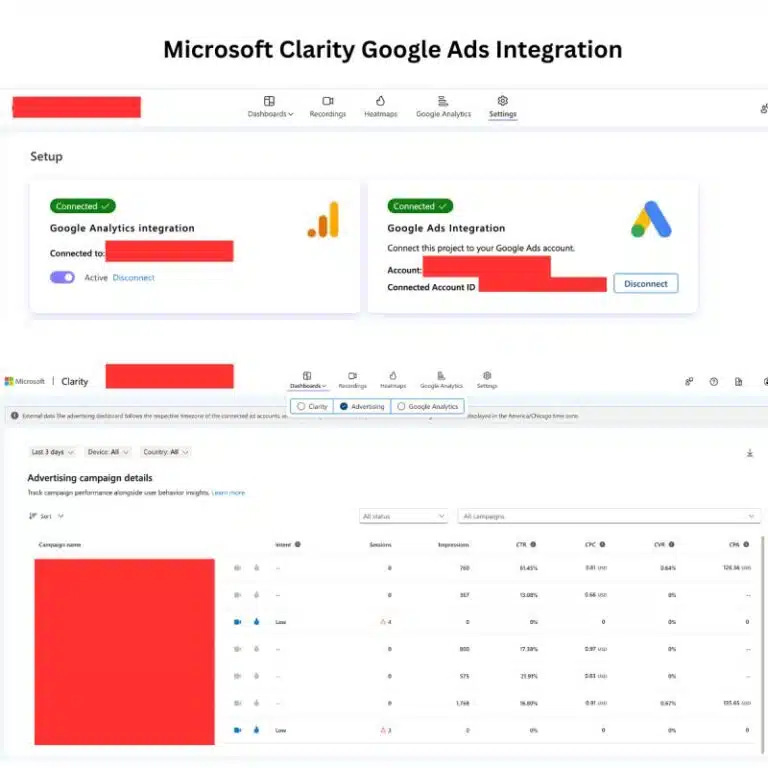Break the PMax Algorithm
🔍 Rethinking PMax: Beyond the Algorithm’s Comfort Zone
Howdy Readers 🥰
In this newsletter, you’ll find:
🔍 Rethinking PMax: Beyond the Algorithm’s Comfort Zone
🔍 Microsoft Clarity Integrates with Google Ads for Deeper Insights
🐿️ Tweet of the Day
If you’re new to Buyology then a hearty welcome to you, You’ve reached the right place alongside 50k+ amazing people, Before you forget, if someone forwarded this newsletter to you, don't forget to subscribe to our newsletter so you never miss out!
Together with Instant Commerce
Figma to Shopify plugin: just copy, paste, & publish
Bring your designs to life with Instant’s Figma to Shopify plugin.
Transform any Figma frame into a fully functional Shopify page in minutes—no code needed. Create beautiful homepages, high-converting product pages, and custom sections that match your exact vision. Simply copy your Figma designs, paste them into Instant, and publish them directly to your Shopify store.
With over 9.3k users, this plugin is perfect for designers, agencies, and store owners who want seamless collaboration and faster results.
Build faster, design smarter, and launch your store with ease.
Try the Figma to Shopify plugin today!
🔍 Rethinking PMax: Beyond the Algorithm’s Comfort Zone
Google’s Performance Max (PMax) campaign promises to revolutionize how businesses engage with digital marketing through its automated bidding system. However, despite its advanced technology, PMax may not be the panacea for new customer acquisition that many hope for.
Here’s an analysis based on extensive campaign evaluations, revealing that PMax might be more about recycling existing customers than capturing new ones.
1. Preference for Familiarity
PMax tends to prioritize audiences already familiar with your brand:
• Returning Visitors: Those who have previously interacted with your website.
• Existing Customers: Individuals who have already made purchases.
• Brand-Aware Users: Audiences who recognize or show affinity towards your brand.
While this might result in impressive short-term results, it raises concerns about long-term sustainability and true business growth, which relies heavily on continuously expanding the customer base.
2. Initial Success vs. Long-Term Performance
PMax campaigns often show promising results initially, thanks to their focus on low-hanging fruit—easy targets with a higher likelihood of conversion. However, as time progresses, the efficacy of reaching new segments diminishes, leading to stagnant or declining growth metrics.
3. The Issue of Overlapping Channels
When integrated with a multi-channel marketing strategy, PMax’s efficiency paradoxically becomes its drawback. It tends to retarget users brought in through other channels like organic searches or influencer campaigns, rather than generating unique leads. This overlap means you might be paying to market to the same audience multiple times across different platforms.
4. Automated Bidding Limitations
Despite settings aimed at targeting new customers, PMax struggles to differentiate effectively between new and returning users due to its reliance on algorithmic bidding. This can lead to a cycle where the same “fish” are caught repeatedly, without adding new “fish” to the “pond.”
Strategic Recommendations
To leverage PMax effectively while still growing your customer base, consider these strategies:
• Holistic Media Strategy: Integrate PMax into a broader media strategy that includes explicit efforts to attract new customers.
• Unified Campaign Management: Move towards a unified management approach for all media channels to ensure a cohesive customer journey and avoid audience overlap.
• Rigorous Impact Measurement: Focus on metrics that differentiate between new and returning visitors, and assess the typical conversion lag to understand the customer pathway better.
Conclusion
Performance Max can be a powerful tool in your advertising arsenal if used correctly. However, for businesses aiming to expand their market reach, it’s crucial to balance PMax with strategies specifically designed to attract and convert new customers.
🔍 Microsoft Clarity Integrates with Google Ads for Deeper Insights
Insights from SEL
Microsoft Clarity’s integration with Google Ads now gives marketers complete visibility into how paid traffic interacts with their websites post-click. This connection bridges the gap between ad spend and real user behavior, offering data-driven insights to optimize campaign performance.
The Breakdown:
Seamless Google Ads Integration: Advertisers can directly connect Google Ads accounts to Clarity, enabling full access to post-click engagement data through heatmaps and session recordings.
Comprehensive Campaign Dashboard: A new advertising-focused dashboard displays real-time, campaign-specific engagement metrics, providing a clearer picture of how users interact with landing pages.
Enhanced Intent Tracking: Clarity now tracks user intent by campaign, helping marketers identify which ads drive meaningful engagement versus those that result in empty clicks.
Smarter Campaign Optimization: This integration allows marketers to refine both ad campaigns and landing pages using behavioral data, ultimately boosting ROI and cutting wasted ad spend.
By combining Google Ads data with Clarity’s advanced behavioral analytics, marketers gain actionable insights to optimize strategies and maximize results positioning Microsoft Clarity as a serious competitor in the analytics space, delivering tools advertisers need to turn clicks into meaningful conversions.
🐿️ Tweet of the Day
Advertise with Us
Wanna put out your message in front of over 50,000 best marketers and decision makers?
Checkout our Partner Kit here🤝
At Buyology, we care about our readers and want to provide the best possible experience. That's why we always look for ways to improve our content and connect with our audience. It would be amazing if you could hit us up with feedback about our content or absolutely anything, we are always up for a chat 🥰
Thanks for your support, We'll be back with more such content 🥳



